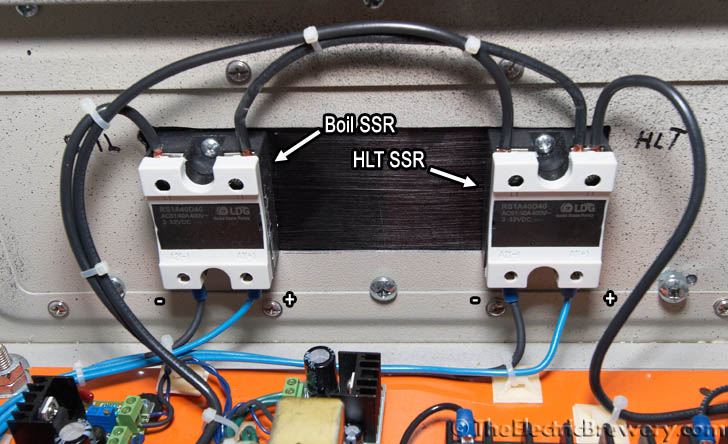You can start with the diagram posted in #391 of this thread. You just need to change the elements to 5500W units and then add the E-Stop circuit from any of my other diagrams. For illuminated switches you would need to change out the ones I've illustrate to the ones you want to use.P-J: I can't even begin to tell you how helpful your diagrams have been in trying to develop my own e-brew plans. I was trying to sketch something out like your diagrams, but it's not going so well. Like many others here, I probably know just enough to get myself in trouble. I was hoping I could tell you what I had in mind, and you might have already sketched out something like this for someone else, and I just overlooked it in the thread....
I've got a HLT and BK to control/heat. My MT is a cooler, so that's going to be non-electric for now.
HLT: 5500w element controlled by PID/probe
BK: 5500w element controlled by rheostat (eventually PID/probe, but $$...)
E-stop kill switch, 3 position selector for elements (HLT/None/BK) and then an On-Off for each element.
Plug and on-off for a single pump. Planning to buy a 2nd pump in future, but just one for now.
LEDs for the 3 position selector for the elements, and the on-off for the elements and pump.
I have a friend who gave me a Leviton 6895 GFCI (http://communities.leviton.com/servlet/JiveServlet/previewBody/2046-102-1-3097/Spec 6895.pdf) and a recommendation to start off with a 50A breaker in my house panel and this GFCI in my control panel, and eventually upgrading to a 50A GFCI in my house panel for double security. Do you have any thoughts on that?
Thanks man, I know your diagrams have helped a TON of people already, hoping to add my name to that list
I've run into a serious problem with my computer system since Microsoft removed their support for Windows XP. I'm currently trying to update my system to Windows 8.1 which is an extremly difficult mission at this point.
Sorry..










